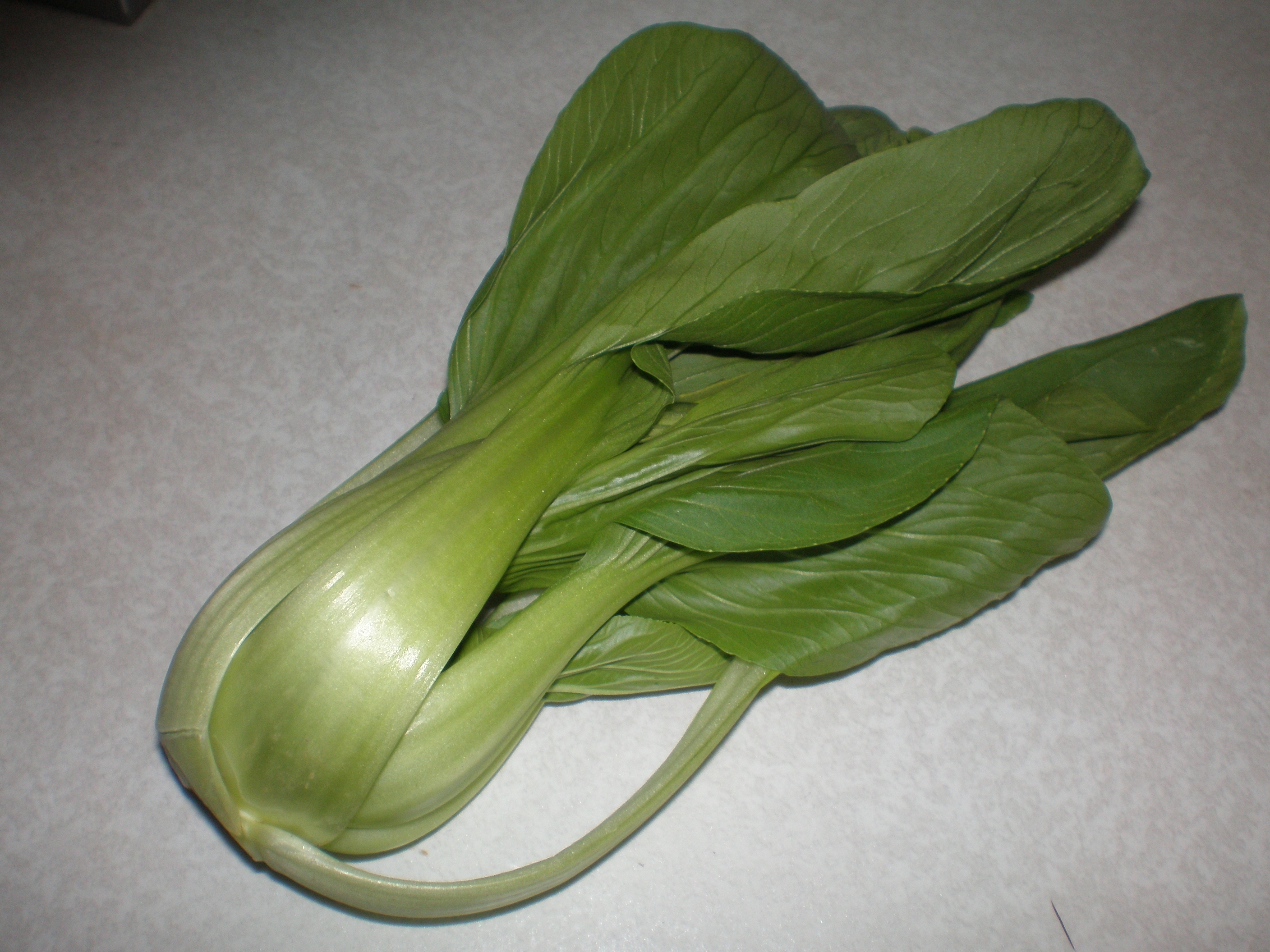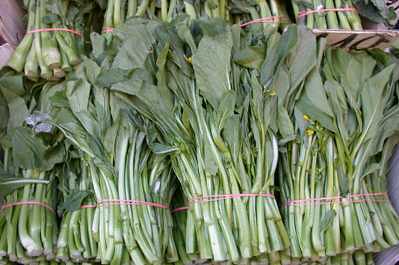We have a lot of posts on this sub about how to cook things, but not as many about buying things to cook. My specialty is Chinese and East Asian cuisine, which uses a lot of unique and possibly unfamiliar ingredients, so I thought I'd do a series of posts on the various ingredients that are available and how they are used. In non-Asian countries, these ingredients can often only be found in specialty Asian markets. We'll start with my favorite section, the produce section. This post will focus on the various leafy greens you might find in Chinese cooking. All of these would be great for stir-frying with some salt and sugar.
Bok Choy (青菜)
This is the most common kind of leafy vegetable you will find in Chinese cuisine. I've already made a recipe post about one way to cook it. This picture shows the variety that I usually use. There's also a kind called "baby bok choy" which, as you can imagine, is a bit smaller. The name in Mandarin Chinese simply means "green vegetable". The word "Bok Choy" comes from the Cantonese name, which means "white vegetable". This may seem puzzling, but that's because there's a variety with white stems.
Bok choy can be somewhat bitter. But soaking them in water for 30min - 1hour does a lot to cut that bitterness. If prepared this way, they can taste quite tender and sweet.
Ji Mao Cai (鸡毛菜)
This is a variant of Bok Choy that's popular in Shanghainese cuisine. The name means "chicken feather vegetables" because of its shape. Unlike regular bok choy, its stems are long and thin. It's also less bitter than regular bok choy.
Gai Lan / Chinese Broccoli (芥兰)
In Chinese restaurant menus, this is generally called "Chinese broccoli". The Chinese name actually means "mustard orchid". Funnily enough, the Chinese word for broccoli means "Western orchid flower". It does, in fact, have a taste similar to brocolli, but much stronger. This vegetable has a thick, fibrous stalk which is quite bitter. I usually cut off and discard the bottom of the stalk so as to separate the leaves.
Yu Choy / Rapeseed Leaves (油菜)
Don't let the name scare you, this vegetable is actually quite delicious. The Chinese name literally means "oil vegetable", since the oil extracted from it is used to make rapeseed oil (canola oil). It has a taste similar to Gai Lan but much milder. The stalks are also much thinner and it is, on the whole, easier to cook.
Dou Miao / Pea Shoots (豆苗)
As the name suggests, these are the stem and leaves of a young snow pea plant. When cooked, this vegetable is very juicy and flavorful. It is usually cooked by stir-frying with garlic. If there's one downside, it's that pea shoots can be quite expensive compared to the other vegetables introduced.
Napa Cabbage (大白菜)
You've likely seen a mention of these before in my previous recipes. The name in Chinese means "big white vegetable". As the English name suggests, it tastes a bit like cabbage, but it is much sweeter and less fibrous. Besides being used for stir-frying, it's also a common addition to soups and hot pots. This is also the vegetable used to make kimchi.




